
Le Rouge et le Noir is a historical psychological novel in two volumes by Stendhal, published in 1830. It chronicles the attempts of a provincial young man to rise socially beyond his modest upbringing through a combination of talent, hard work, deception, and hypocrisy. He ultimately allows his passions to betray him.

Valentina Cortese, sometimes credited as Valentina Cortesa, was an Italian film and theatre actress. In her 50 years spanning career, she appeared in films of Italian and international directors like Michelangelo Antonioni, Federico Fellini, Franco Zeffirelli, François Truffaut, Terry Gilliam, Joseph L. Mankiewicz and others.

Rossano Brazzi was an Italian actor. He moved to Hollywood in 1948 and was propelled to international fame with his role in the English-language film Three Coins in the Fountain (1954), followed by the leading male role in David Lean's Summertime (1955), opposite Katharine Hepburn. In 1958, he played the lead as Frenchman Emile De Becque in the Rodgers and Hammerstein musical South Pacific. His other notable English-language films include The Barefoot Contessa (1954), The Story of Esther Costello (1957), opposite Joan Crawford, Count Your Blessings (1959), Light in the Piazza (1962), and The Italian Job (1969).

Telefoni Bianchi films, also called deco films, were made by the Italian film industry in the 1930s and the 1940s in imitation of American comedies of the time in a sharp contrast to the other important style of the era, calligrafismo, which was highly artistic. The cinema of Telefoni Bianchi was born from the success of the Italian film comedy of the early 1930s; it was a lighter version, cleansed of any intellectualism or veiled social criticism.

Irasema Dilián was an actress. Born in Brazil to Polish parents, she began her film career in Italy, and appeared in Italian, Spanish and Mexican films.

Maddalena, Zero for Conduct is a 1940 Italian "white-telephones" comedy film directed by Vittorio De Sica. It is a remake of the Hungarian film Magda Expelled (1938).
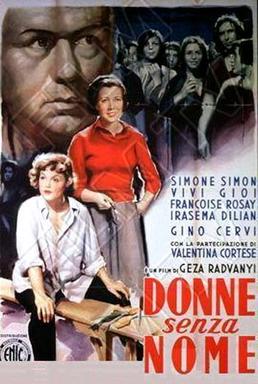
Women Without Names is an Italian drama film of 1950 directed by Géza von Radványi and starring Valentina Cortese, Simone Simon, Vivi Gioi, and Françoise Rosay.

The Captain's Daughter is a 1947 Italian historical adventure film directed by Mario Camerini and starring Irasema Dilián, Amedeo Nazzari and Vittorio Gassman. It was one of a number of ambitious historical epics made in the wake of the successful 1946 film The Black Eagle. The film's sets were designed by the art director Piero Filippone. It was entered into the 1947 Cannes Film Festival. It is based on the 1836 novel of the same name by Alexander Pushkin, which is set in Russia during the reign of Catherine II. It takes place during the Cossack Rebellion.

Milady and the Musketeers is 1952 French-Italian historical adventure film directed by Vittorio Cottafavi and starring Rossano Brazzi, Yvette Lebon and Armando Francioli. It is based on the 1844 novel The Three Musketeers by Alexandre Dumas, and was a popular success.

The Black Eagle is a 1946 Italian historical adventure drama film directed by Riccardo Freda and starring Rossano Brazzi, Irasema Dilián and Gino Cervi. It was released as Return of the Black Eagle in the United States. The film is based on the unfinished 1832 Russian novel Dubrovsky by Alexander Pushkin (1799–1837). It was followed by a 1951 sequel Revenge of the Black Eagle, also directed by Freda.
The King's Jester is a 1941 Italian historical drama film directed by Mario Bonnard and starring Michel Simon, María Mercader and Rossano Brazzi. The film is an adaptation of the play Le roi s'amuse by Victor Hugo and uses music from Verdi's later opera Rigoletto. It is set at the court of Francis I of France in the Sixteenth century.

Girl of the Golden West is a 1942 Italian western film directed by Carl Koch and starring Michel Simon, Isa Pola and Rossano Brazzi. It is based on the 1936 novel, La Dame de l'Ouest, by Pierre Benoit. It was made at the Scalera Studios in Rome, and on location in Lazio countryside. The film's title alludes to the opera The Girl of the Golden West by Giacomo Puccini, but is not an adaptation of it. It was one of only a handful of Westerns to be made during the silent and Fascist eras, in a genre in which Italy later became famous.

Il conte Aquila is a 1955 Italian historical drama film directed by Guido Salvini. Inspired to real life events of Italian revolutionary Count Federico Confalonieri, it is based on the drama with the same name by Rino Alessi.
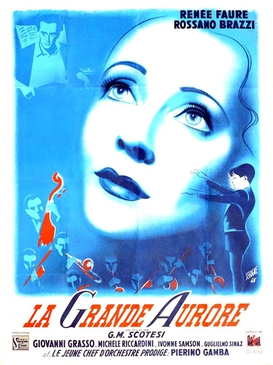
The Great Dawn is a 1947 Italian drama film directed by Giuseppe Maria Scotese and starring Renée Faure, Rossano Brazzi and Giovanni Grasso. The Greek actress and future star Yvonne Sanson made an early appearance in the film.
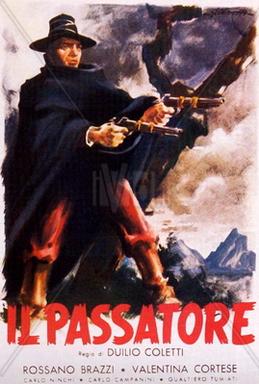
Bullet for Stefano is a 1947 Italian adventure-drama-crime film written and directed by Duilio Coletti and starring Rossano Brazzi and Valentina Cortese. It is loosely based on real-life events of Stefano Pelloni (1824-1851), an Italian highwayman known as "Il Passatore". It grossed 146.2 million lire at the Italian box office.

The Ten Commandments is a 1945 Italian drama film directed by Giorgio Walter Chili. It features an ensemble of Italian actors in episodes based on the Ten Commandments.
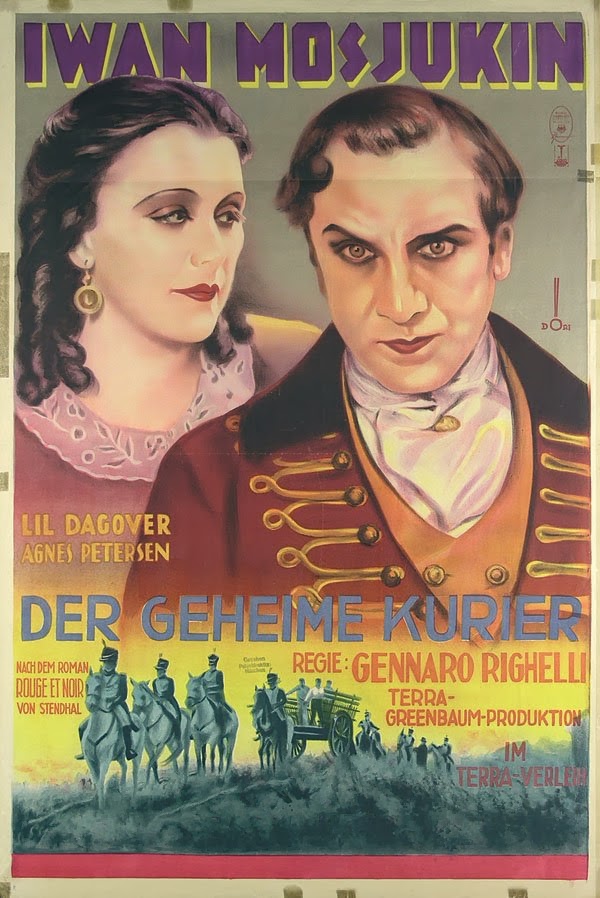
The Secret Courier is a 1928 German silent adventure film directed by Gennaro Righelli and starring Lil Dagover, Ivan Mozzhukhin and Agnes Petersen. It is based on the classic novel The Red and the Black by Stendhal, which Righelli later remade as a sound film The Courier of the King in 1947. The film was shot at the Terra Studios in Berlin. The film's art direction was by Otto Erdmann and Hans Sohnle.

Kean is a 1940 Italian historical drama film directed by Guido Brignone and starring Rossano Brazzi, Germana Paolieri. and Sandro Salvini. It is based on the 1836 play Kean by Alexandre Dumas portraying the life of the English actor Edmund Kean.

The Hero of Venice is a 1941 Italian historical adventure film directed by Carlo Campogalliani and starring Gustav Diessl, Paola Barbara, Rossano Brazzi and Valentina Cortese.
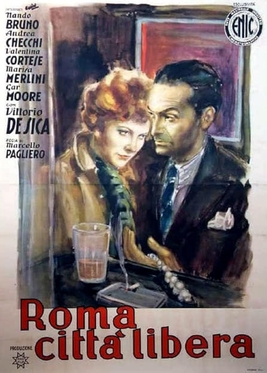
Rome, Free City is a 1946 Italian drama film directed by Marcello Pagliero and starring Valentina Cortese, Andrea Checchi, Marisa Merlini and Vittorio De Sica. The film's sets were designed by the art director Gastone Medin.



















